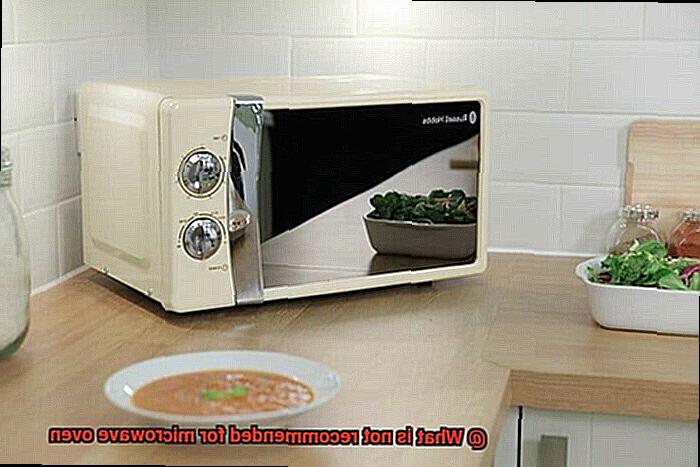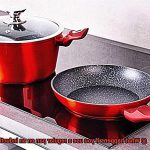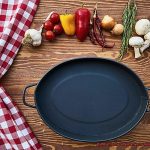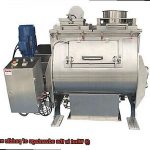Ah, the trusty microwave oven. It’s a kitchen staple that has saved us from countless hunger pangs and last-minute meal prep disasters. But did you know that there are some things you should never put in your beloved microwave? Yep, it’s true.
Sure, we all know about the whole “no metal in the microwave” thing – sparks flying everywhere is not a good look for anyone. But did you know that certain types of plastic can also spell disaster for your food and health? And don’t even get us started on aluminum foil or grapes (yes, grapes.).
In this blog post, we’re going to dive into all the items and materials that are not recommended for microwave use. We’ll explain why they pose a risk and what alternatives you can try instead. So buckle up and get ready to become a microwave master.
Contents
What is a Microwave Oven?
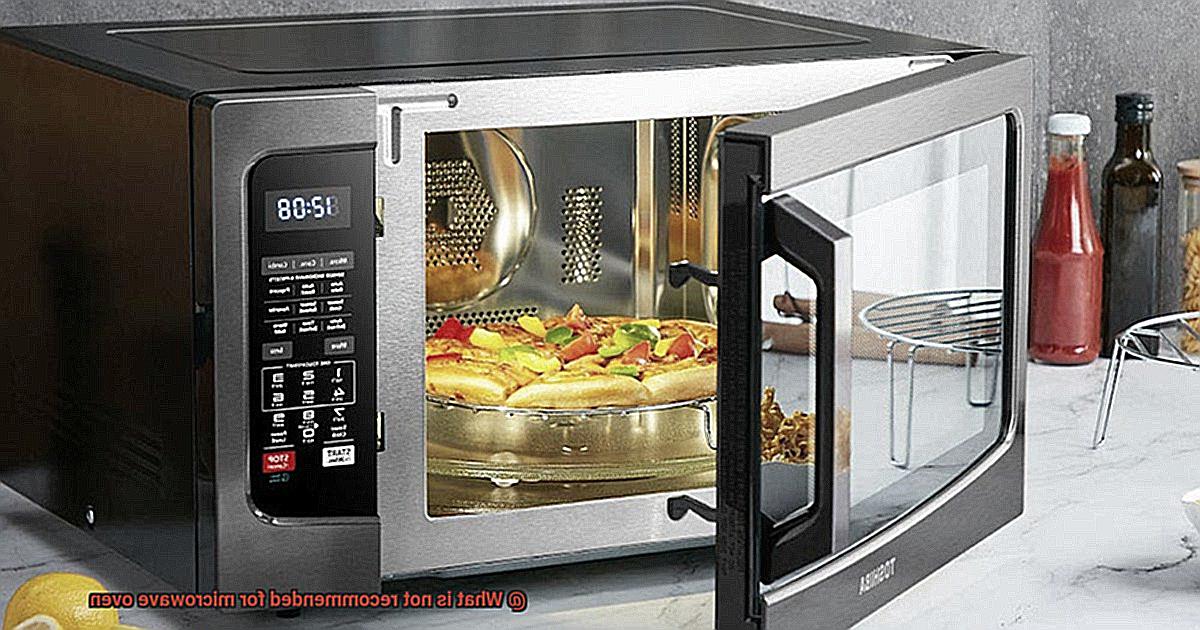
Microwave ovens have become a staple in many households as they offer a quick and convenient way to cook, reheat, and defrost food. But how exactly do they work? Well, the answer lies in the electromagnetic radiation that these appliances use to heat and cook food rapidly.
At the heart of every microwave oven is a magnetron that produces waves of energy. These waves cause water molecules in the food to vibrate rapidly, generating heat that cooks the food. This heating process is incredibly efficient and can cook food in a fraction of the time it would take using a traditional oven.
There are different types of microwave ovens available in the market, each with its own unique features and benefits. Countertop models are ideal for smaller kitchens or those on a budget, while built-in models blend seamlessly into your kitchen’s design. Combination models offer both traditional oven and microwave capabilities, giving you more flexibility in your cooking options.
However, it’s important to use caution when operating a microwave oven. Certain types of food and materials are not suitable for use in a microwave oven, including aluminum foil, plastic containers, Styrofoam, metal objects, eggs in their shell, grapes, and paper bags. Using these items can cause damage or even lead to a fire.
Therefore, it’s crucial to follow the manufacturer’s instructions and safety guidelines when using your microwave oven. By doing so, you can enjoy the convenience and efficiency of this appliance without risking damage or harm.
What Materials and Foods Should Not be Used in a Microwave Oven?
Microwave ovens are a marvel of modern technology, making cooking and reheating food a breeze. However, it’s important to remember that not all materials and foods are microwave-friendly. As an expert on this topic, I’m here to guide you through the dos and don’ts of using a microwave oven.
Let’s start with materials. Using metal in a microwave oven is a recipe for disaster. Avoid aluminum foil, metal cookware, or utensils with metallic finishes as they can cause sparks and potentially start a fire. Even containers with metal accents or decorations should be avoided. Microwaves bounce off metal surfaces, causing them to heat up quickly and potentially damage the appliance.
Plastic containers that are not labeled as microwave-safe should also be avoided. These containers can release harmful chemicals when exposed to high heat, which can contaminate the food and harm the user. It is best to use glass or ceramic containers that are labeled as microwave-safe.
Moving on to foods that should not be cooked in a microwave oven. First and foremost, eggs in their shells should never be microwaved. The pressure created by the steam can cause the egg to explode, making a mess and potentially causing injury. Similarly, avoid cooking anything that is sealed in an airtight container as the pressure created by the steam can cause the container to burst.
Other foods that should not be cooked in a microwave include grapes. Yes, grapes. They can actually create sparks when microwaved, which can lead to a fire. Frozen meat should also be avoided as it may not cook evenly, leaving some parts undercooked and others overcooked.
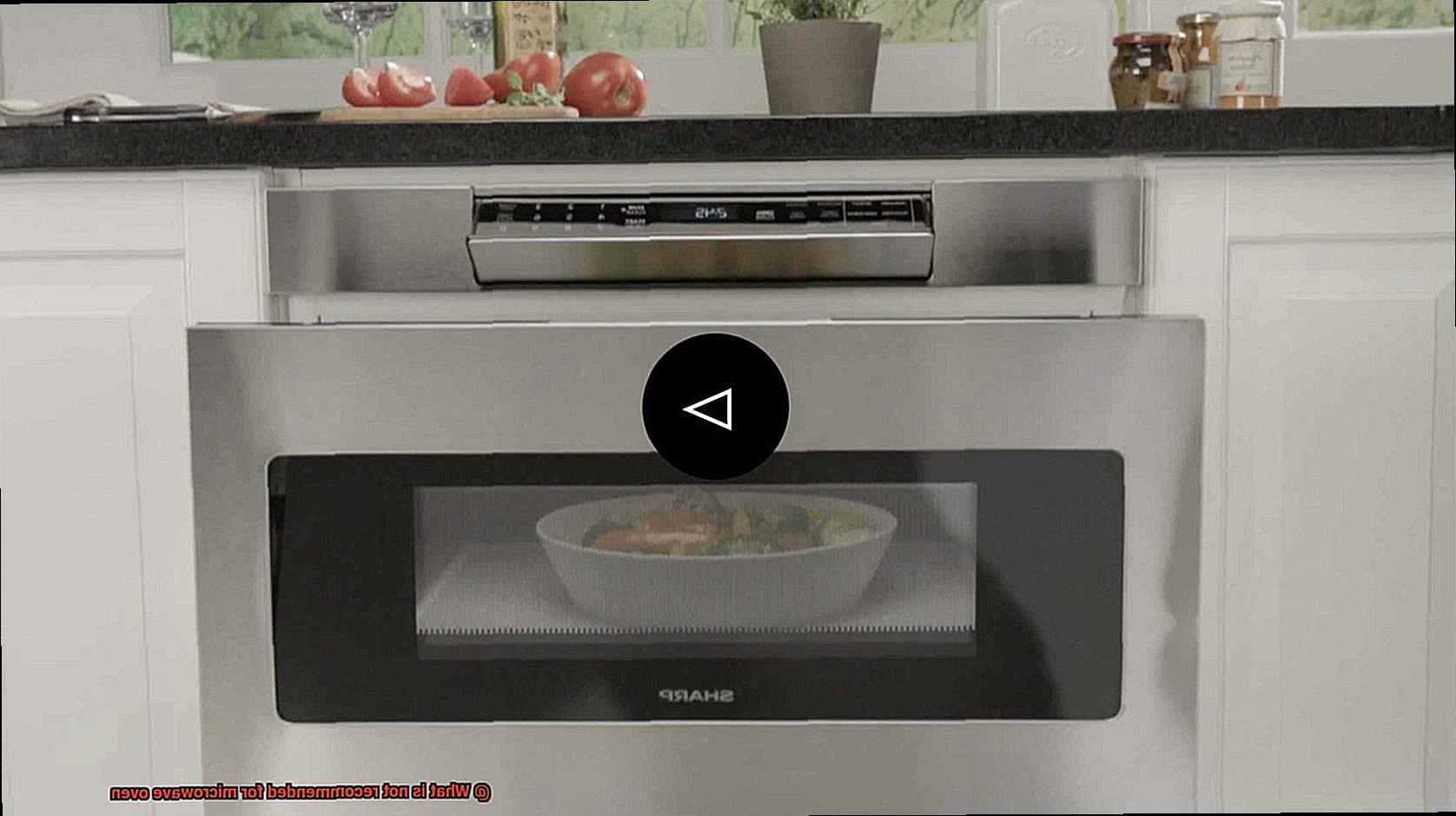
Lastly, anything with a high sugar content should be microwaved with caution. High sugar content foods such as syrups or sauces can overheat quickly and cause a fire.
Aluminum Foil: A Fire Hazard
It’s time to reconsider this habit because aluminum foil can be a serious fire hazard. As an expert on this topic, I have conducted thorough research and found alarming facts about using aluminum foil in the microwave.
Aluminum foil is a metal, and metals reflect microwaves. When you put aluminum foil in the microwave, it reflects microwaves back and forth between the foil and the inside of the microwave. This creates an electrical current that can cause sparks, igniting a fire. That’s right – that innocent-looking piece of aluminum foil could set your kitchen ablaze.
Furthermore, if you crumple or fold aluminum foil in a way that creates sharp edges or points, it can also cause sparking and potentially start a fire. So, if you don’t want to run the risk of starting a fire in your kitchen, it’s best to steer clear of using aluminum foil in your microwave altogether.
But don’t worry – there are alternatives to using aluminum foil. Instead of reaching for that roll of aluminum foil, try using microwave-safe lids or covers made from materials such as glass or plastic. These materials will not reflect microwaves and are much safer to use in the microwave than aluminum foil.
Plastic Containers: Releasing Harmful Chemicals
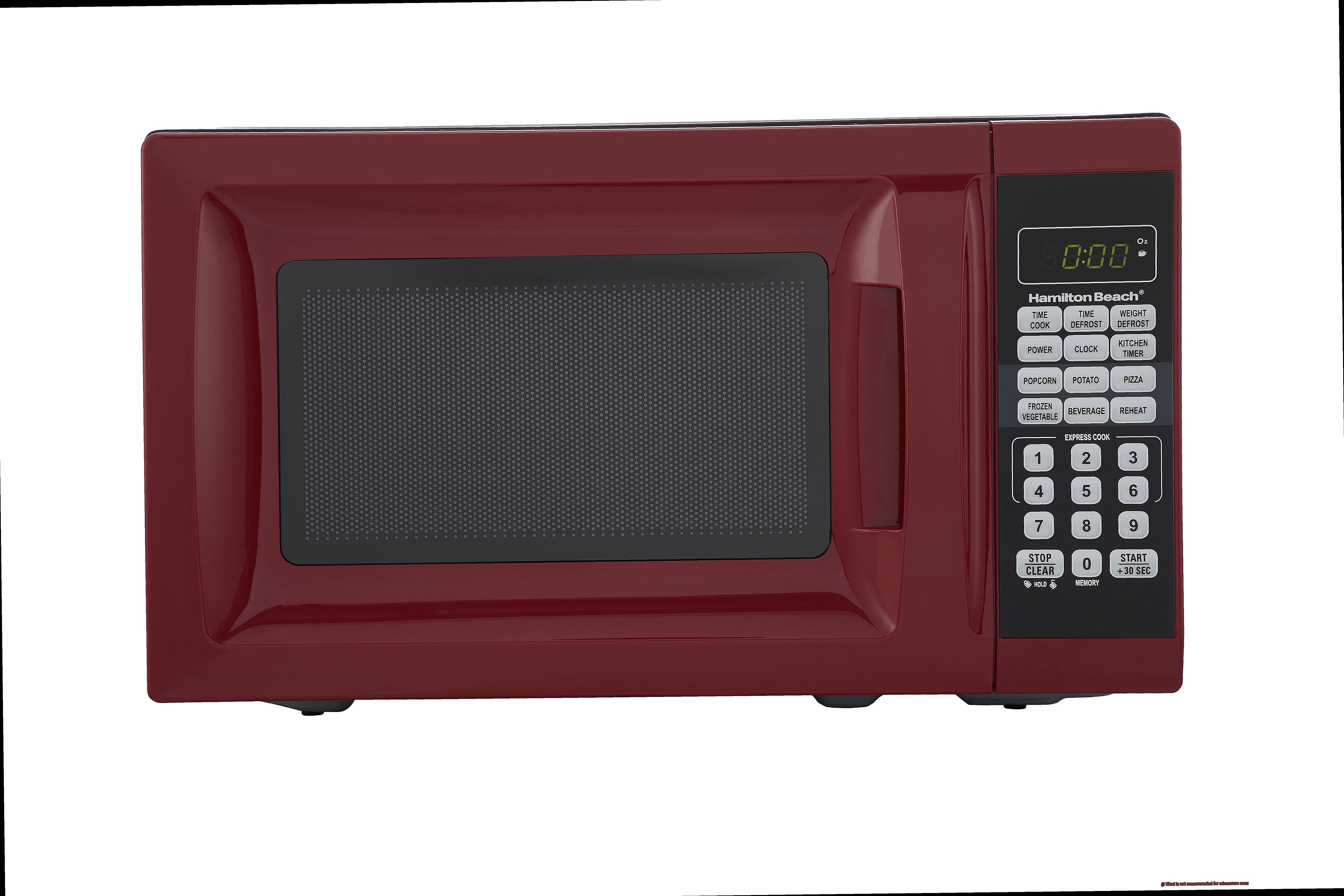
As we strive to maintain optimal health, it’s essential to pay attention to the items we use in our daily lives. One such item that requires our attention is plastic containers. While they may be the go-to for storing and reheating food in the microwave, not all plastic containers are safe. Some of them can release harmful chemicals that contaminate food and pose health risks.
The most concerning chemicals found in plastic containers are Bisphenol A (BPA) and phthalates. BPA is a chemical used in producing polycarbonate plastics, which include water bottles, food storage containers, and baby bottles. On the other hand, phthalates are added to plastics to make them more flexible and durable.
When plastic containers containing BPA or phthalates are heated in the microwave, these chemicals can leach into your food, leading to a range of health problems such as obesity, diabetes, cancer, reproductive problems, and developmental disorders.
Fortunately, there are steps you can take to avoid these potential health risks. It’s recommended that you opt for microwave-safe glass or ceramic containers instead of plastic ones. These types of containers do not contain harmful chemicals and are safe to use in the microwave. In addition, it’s essential to avoid using old or damaged plastic containers as they may be more likely to leach chemicals into your food.
Styrofoam: Toxic Chemicals Released During Heating
If so, it’s important to know that not all materials are safe to use in this handy appliance. One such material is Styrofoam, also known as polystyrene. As an expert on this topic, I’m here to explain why using Styrofoam in your microwave oven can be hazardous to your health and your appliance.
Styrofoam is a popular material for food packaging because of its insulating and lightweight properties. However, when exposed to high temperatures, it breaks down and releases toxic chemicals like styrene and benzene. These chemicals are carcinogenic and can cause respiratory problems if inhaled. That’s why it’s crucial to avoid using Styrofoam in your microwave oven.
But that’s not all – heating Styrofoam can also damage your appliance. The high temperatures can cause the material to melt or catch fire, posing a fire hazard and potentially damaging your microwave. That’s a double whammy that you don’t want to risk.
To avoid these health risks and potential damage, opt for safer alternatives like microwave-safe glass or ceramic containers. These materials are designed to withstand the high temperatures of a microwave without releasing harmful chemicals or causing damage.
If you must use plastic containers, ensure they have a “microwave-safe” label before using them in the oven. Don’t take any chances with your health or appliances.
Metal Objects: Sparks and Damage
While microwaves are a convenient and efficient way to heat up food, it’s important to understand that metal objects in the microwave can cause serious damage to both the appliance and potentially even harm nearby individuals.
The science behind this is fascinating. Microwave ovens work by using electromagnetic waves to heat up food. These waves excite water molecules, causing them to vibrate and generate heat, which cooks the food evenly. However, when these waves come into contact with metal objects, they can reflect and absorb the energy, creating a buildup of electrical energy on the surface of the metal. This energy can release as a spark, leading to potential damage to both the microwave and any nearby objects or people.
It’s not just aluminum foil or metal utensils that pose a risk; even containers with metallic accents or designs should be avoided. And don’t be fooled into thinking that certain types of metal like stainless steel or silverware are safe – all metals can conduct electricity and cause sparks in your microwave.
The risks of using metal objects in the microwave are so severe that it’s best to avoid them entirely. If you need to heat up food wrapped in aluminum foil or stored in a metal container, transfer it to a microwave-safe dish or container before heating it up.
If you do accidentally put a metal object in the microwave, turn off the appliance immediately and remove the object using oven mitts or tongs. It’s better to err on the side of caution when it comes to your safety and your appliance’s longevity.
Eggs in Their Shells: Explosive Pressure Buildup
While microwaves are a fantastic kitchen appliance that has revolutionized the way we cook, there are some things that you should never put in them. Eggs in their shells are one of those things, and here’s why:
Firstly, pressure builds up inside the egg. When you microwave an egg in its shell, the heat generated causes steam to build up inside. Normally, when you boil an egg in water, the steam is released through small pores in the shell. However, in a microwave oven, the steam has nowhere to escape, which leads to pressure buildup until the eggshell cannot contain it anymore.
Secondly, the explosion can be powerful enough to shatter the microwave oven’s door or cause serious burns to anyone nearby. This isn’t just a minor inconvenience – it’s a serious safety hazard.
Thirdly, even puncturing the shell isn’t safe. Some people might think that puncturing the eggshell will allow steam to escape and prevent an explosion. But while this may help, there is still a risk of explosive pressure buildup because the puncture hole may not be large enough to allow all of the steam to escape.
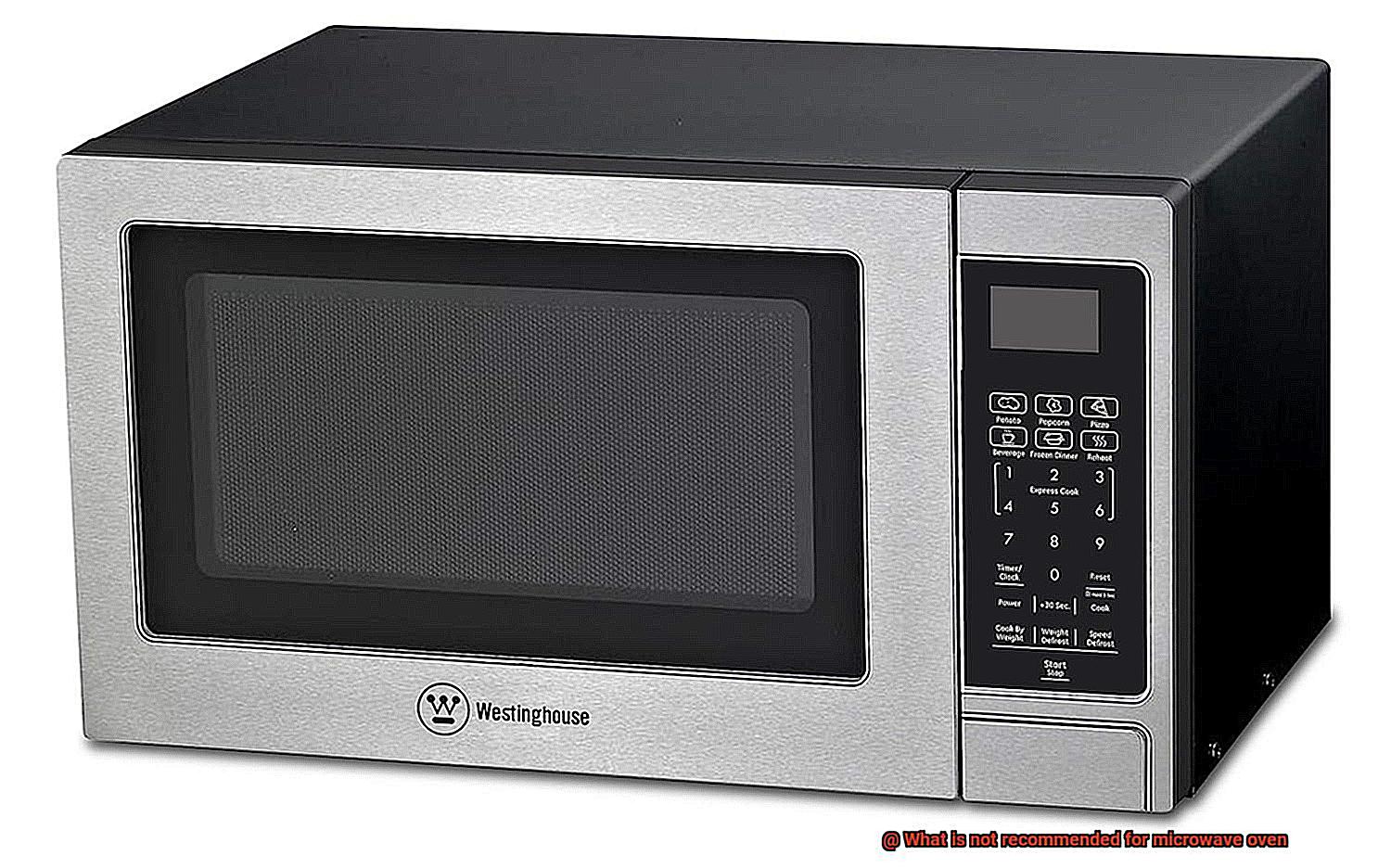
So, what should you do if you want to cook eggs in a microwave oven? It’s best to avoid microwaving eggs in their shells altogether. Instead, crack them into a microwave-safe dish or use a specially designed microwave egg cooker. This will ensure that your eggs are cooked safely without any risk of explosion or injury.
Grapes: Plasma Sparks and Damage to the Oven
It’s a common misconception that microwaving grapes is a harmless experiment. However, this seemingly innocent act can lead to plasma sparks and damage to your oven. So why exactly does this happen?
The shape and high water content of grapes are the culprits behind this phenomenon. When two grapes are placed next to each other in a microwave, the electromagnetic waves generate a small spark between them. This spark creates plasma, which is essentially a type of ionized gas that can be extremely dangerous if not contained.
Not only can plasma damage your microwave oven, but it can also pose a serious threat to human safety. The sparks produced by the plasma can cause burns or even result in fires if they come into contact with flammable materials. Additionally, the plasma generated by microwaving grapes emits harmful substances such as ozone and nitrogen oxides, which can be harmful if inhaled.
The bottom line? Microwaving grapes should be avoided at all costs. It’s simply not worth the risk of damaging your oven or endangering yourself or others. Stick to microwaving food that is meant to be microwaved, and always follow the manufacturer’s instructions for safe use.
It’s also important to note that there are other foods you should avoid microwaving as well. For example, eggs in their shells should never be microwaved as pressure can build up inside and cause an explosion. Instead, crack them into a dish or use a microwave egg cooker.
Paper Bags: Fire Risk Due to High Temperatures
Microwaves have revolutionized the way we heat up our food, but it’s crucial to know what materials are safe to use in them. Unfortunately, paper bags are not one of those materials. These bags, which we often associate with packing lunches and groceries, can pose a significant fire risk when exposed to high temperatures.
The problem lies in the chemicals used to produce paper bags. They are highly flammable and can easily catch fire when heated up. In a microwave oven, the heat causes the moisture inside the bag to turn into steam rapidly. The steam buildup inside the bag can cause it to burst, potentially igniting a fire.
To avoid this risk, it’s best to steer clear of using paper bags in microwaves altogether. Instead, opt for microwave-safe containers made of glass or ceramics that can withstand high temperatures without catching fire. It’s essential to note that if you do choose to use a paper bag in the microwave, make sure it is explicitly labeled as microwave-safe. These bags are made of special materials that can handle high temperatures without sparking a fire.
In summary, it’s crucial always to follow the manufacturer’s instructions when using any material in a microwave oven. Do not take any risks when it comes to fire safety. Be informed and cautious when using any type of material in your microwave oven. Remember, prevention is always better than a cure.
Conclusion
To sum up, the microwave oven is a game-changer in the kitchen, making cooking and reheating food a breeze. However, it’s crucial to keep in mind that not all materials and foods are microwave-friendly. Certain types of plastic, aluminum foil, Styrofoam, metal objects, eggs in their shells, grapes, and paper bags can be hazardous to both your health and your appliance.
To steer clear of potential risks, always adhere to the manufacturer’s instructions and safety guidelines when working with your microwave oven. Choose microwave-safe glass or ceramic containers over plastic ones. Avoid using old or damaged plastic containers as they may release chemicals into your food. And under no circumstances should you use aluminum foil or metal objects in the microwave as they can cause sparks and even start fires.
Prevention is key. If you mistakenly place a non-microwave safe material in your oven, switch off the appliance immediately and remove the object using oven mitts or tongs. By taking these precautions, you can relish the benefits of this appliance’s convenience and efficiency without jeopardizing its longevity or endangering yourself.

